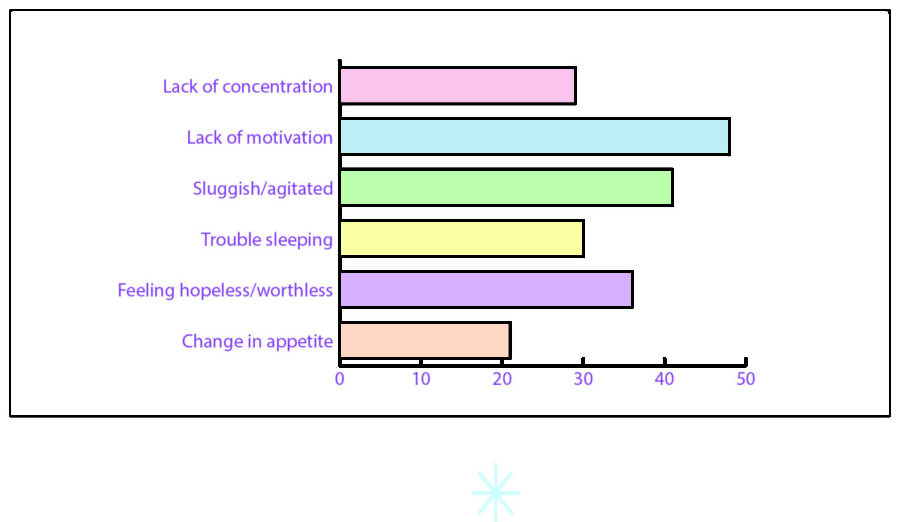Students experience Seasonal Affective Disorder
The transition from the hot summer weather to the dull and cold winter months can cause many students to experience a drop in their grades, elevated levels of laziness and lack of motivation to stay active. This could be because the student is experiencing seasonal affective disorder.
What is it? Seasonal Affective Disorder (SAD) is a type of depression that’s related to changes in seasons. For most people that experience SAD, symptoms begin to occur in the fall and continue into the winter months, sapping one’s energy and making one feel moody, according to Mayo Clinic.
Symptoms In most cases, symptoms of SAD are the most noticeable late fall or early winter, when days begin to shorten and the summer warmth subsides. Some of the common symptoms that Christine Burback, a licensed professional counselor in Lincolnshire, says she sees in patients are lack of energy, loss of interest in regular activities like spending time with friends, increased tiredness and a change in appetite.
Many students encounter these symptoms, but do not make the correlation between the weather and SAD according to Josephine Dimarco, VHHS social worker.
According to a TSP survey with 143 responses, 33.6% of students said that yes, they do experience SAD. The most common symptoms that they felt were lack of motivation and feeling sluggish or agitated.
Luke Anderson (11) explained the symptoms he feels due to SAD.
“I feel sluggish, I tend to either sleep a lot more or a lot less and I find that I cannot concentrate as much in school.”
Freshman Libby Yates expressed her symptoms during this time of year. Yates doesn’t feel as productive and motivated. This makes her feel even more down as she likes to give back to her community, and the weather hinders her from this.
Despite the change in weather, these students use different tactics to cope with the symptoms.
Senior Bianka Jordan focuses on self-care during this time to combat the sleeping problems and change in appetite she experiences.
“This time of the year is when I pay a lot of attention to selfcare and self-love,” Jordan said. “It reminds me to take care of myself and to do what makes me feel good and happy. It helps me to get through this time until it’s over.”
Yates expressed how she deals with her SAD symptoms. She likes to write more and get her thoughts out; she feels as though it flushes away the negative things she is feeling.
Burback explained that the best way to limit the impacts of SAD is to not alienate yourself from your regular schedule and activities.
“You should try to get outside, for even 15 minutes every couple of days,” Burback said. “Try to stay on a regular routine of what time to sleep at night, and even if you don’t feel like participating in activities, push yourself to do so.”
Burback said that some more intense treatments for SAD are medications, talk therapy and light therapy. Light therapy, she mentioned, is effective for those whose SAD symptoms are related to the lack of sunshine.
Burback explained that talking to a professional can help one to identify the root of the problem and come up with strategies of how to overcome it

